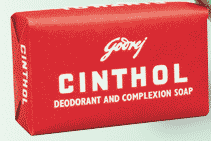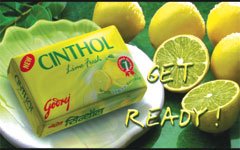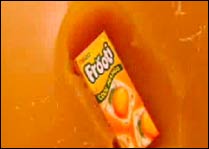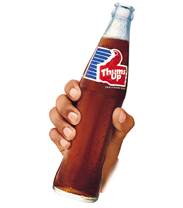Company: Godrej consumer products ltd
Agency ; Orchard Advertising
Cinthol is a 54 year old soap brand from Godrej Consumer products ltd. This brand features in the Interbrand;s Super Brand 2004-05. This is a brand that has withstood the s
 o-called MNC onslaught. This very own Indian brand has been carefully nurtured by the company and owns a special place in the Indian consumer’s mind.
o-called MNC onslaught. This very own Indian brand has been carefully nurtured by the company and owns a special place in the Indian consumer’s mind.Cinthol was launched in the year 1952. The original Cinthol comes with a red pack (still the old Cinthol is available in the market) and the unique Fougere perfume became a big hit during its launch itself. Cinthol have a market share of about 2.5% in value terms. The brand is contemporary and positioned as a masculine soap with USP of protection from body odor.
Godrej have always tried to experiment with this product, trying out new things and coming out with different variants. This has enabled the product be in tune with the changing consumer trends.
Cinthol heavily promoted the product using celebrities of the likes of Vinod Khanna and Imran Khan in 19
 86 . In 1989 Cinthol tried to catch the lime freshness trend using Cinthol Lime which was a big hit. During 1992 it came out with Cologne. The brand went for a major overhaul in 1993-1995 with a new pack. But there was a customer outcry for the old Cinthol. Eventually the company had to relaunch the original Cinthol and the new range was branded as Cinthol International.
86 . In 1989 Cinthol tried to catch the lime freshness trend using Cinthol Lime which was a big hit. During 1992 it came out with Cologne. The brand went for a major overhaul in 1993-1995 with a new pack. But there was a customer outcry for the old Cinthol. Eventually the company had to relaunch the original Cinthol and the new range was branded as Cinthol International.Original Cinthol have the usp of deo + complexion is said to be the first of its kind in India. Cinthol is also made of vegetable oils and not animal fats and was popular for this quality. Cinthol name is derived from SYNTHetic + phenol ( SYNTHOL)
In 2004, the brand embarked on a new positioning of “ Get Ready ,Get Close” The brand also have extensions like Talcum powder and Deo but these extensions were not as successful as this brand.
Cinthol was promoted using smart ads and the product quality was perceived to be excellent. But now Cinthol is lying low with virtually no advertisements. This is a great brand with huge potential. I feel that Cinthol Deo if promoted heavily can easily beat the likes of AXE. But these products are seldom available in the stores.
Cinthol have to Get Ready to Get Close with the new Generation.








